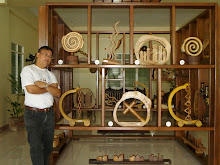
What is swine flu?
Swine flu is a respiratory disease normally found in pigs and caused by type A influenza viruses. While outbreaks of this type of flu are common in pigs, human cases of swine flu do happen. In the past, reports of human swine flu have been rare—approximately one infection every one to two years in the U.S. From December 2005 through February 2009, only 12 cases of human infection were documented.
How is it spread?
Humans with direct exposure to pigs are those most commonly infected with swine flu. Yet, human-to-human spread of swine flu viruses have been documented, however it's not known how easily the spread occurs. Just as the common flu is passed along, swine flu is thought to be spread by coughing, sneezing, or touching something with the viruses on it.
If infected, a person may be able to infect another person one day before symptoms develop and up to seven or more days after becoming sick. Thus, a person is able to pass the flu on before they know they are sick. Those with swine flu should be considered potentially contagious as long as they are demonstrating symptoms and up to seven days longer from the onset of their illness. Children might be contagious for longer periods of time.
Swine flu is a respiratory disease normally found in pigs and caused by type A influenza viruses. While outbreaks of this type of flu are common in pigs, human cases of swine flu do happen. In the past, reports of human swine flu have been rare—approximately one infection every one to two years in the U.S. From December 2005 through February 2009, only 12 cases of human infection were documented.
How is it spread?
Humans with direct exposure to pigs are those most commonly infected with swine flu. Yet, human-to-human spread of swine flu viruses have been documented, however it's not known how easily the spread occurs. Just as the common flu is passed along, swine flu is thought to be spread by coughing, sneezing, or touching something with the viruses on it.
If infected, a person may be able to infect another person one day before symptoms develop and up to seven or more days after becoming sick. Thus, a person is able to pass the flu on before they know they are sick. Those with swine flu should be considered potentially contagious as long as they are demonstrating symptoms and up to seven days longer from the onset of their illness. Children might be contagious for longer periods of time.
Can I catch swine flu from eating pork?
No. The CDC says that swine flu viruses are not transmitted by food. Properly cooking pork to an internal temperature of 160°F kills all bacteria and viruses.
What are the symptoms of swine flu?
Symptoms of swine flu are similar to those of a regular flu: fever and chills, sore throat, cough, headache, body aches, and fatigue. Diarrhea and vomiting can also be present. Without a specific lab test, it is impossible to know whether you may be suffering from swine flu or another flu strain.
What precautionary measures should I take?
The same everyday precautions that you take to prevent other contagious viruses should be used to protect yourself against swine flu. "The best current advice is for individuals to practice good hand hygiene. Periodic hand washing with soap and water, or the use of an alcohol-based hand sanitizer when hand washing is not possible, is a good preventive measure. Also, avoid touching your eyes, nose or mouth, as germs can more easily gain entrance into your body through those areas," suggests
The CDC recommends avoiding contact with sick people and keeping your own good health in check with adequate sleep, exercise, and a nutritious diet.
What should you do if you think you are sick with swine flu?
Contact your health care professional, inform them of your symptoms, and ask whether you should be tested for swine flu. Be prepared to give details on how long you've been feeling ill and about any recent travels. Your health care provider will determine whether influenza testing or treatment is needed. If you feel sick, but are not sure what illness you may have, stay home until you have been diagnosed properly to avoid spreading any infection.
Watch for these symptoms in children. Seek emergency medical care if your child experiences any of the following warning signs:
Fever with a rash
Dehydration
Fast breathing
Bluish skin coloration
Slow to wake or sluggish interaction
Flu-like symptoms improve, but then return and cough worsens
Severe irritability
For adults, emergency medical care is needed if you experience these warning signs:
Difficulty breathing
Dizziness
Confusion
Severe or persistent vomiting
Pain/pressure in the chest or stomach
Remember that the symptoms for swine flu are almost identical to those you might experience with the regular flu. Only your doctor can give you the correct diagnosis.
Are there medicines effective in treating swine flu in humans?
The swine flu responds to the use of oseltamivir (Tamiflu) or zanamivir (Relenza) for those infected. For treatment, these antiviral drugs work best if started soon after getting sick (within 2 days of symptoms).



